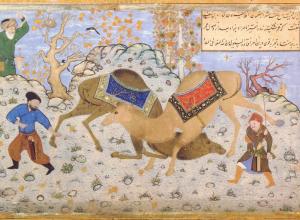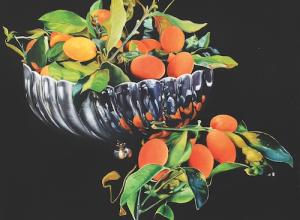
Stuart Handler’s immense success in commercial real estate and his subsequent philanthropy made such a colossal impact that the University of Illinois-Chicago named its real estate department after him.
Handler’s vocation is real estate, while his avocation is collecting pre-Columbian art. He originally envisioned a museum exhibition presenting motifs recurring across 30,000 years of art history. Despite his willingness to provide substantial funding for such a show, museums wrote off Handler’s vision as too difficult.
Handler turned his attention, instead, to the creation of a book that benefits a much broader and less time-constrained audience. In the introduction to the newly released The Commonality of Humans Through Art, Handler writes, “A book is forever and a museum exhibit is not.”
With 576 pages, Handler’s new title qualifies as a coffee table book or, perhaps more accurately, a tome. As if Handler’s pedigree as a highly respected collector and a widely recognized art aficionado weren’t enough, he enlisted 10 scholars to write various chapters. Handler organized chapters not chronologically, but instead by subject matter pertinent to humanity— from creation myths to death, and significant matters in between.
Only a book could corral this global collection. The book’s front endpaper depicts a handsome map from 1570, an appropriate visual introduction to artworks from around the world: China and Nepal; Japan and Jordan; Mesopotamia and Mexico; Nigeria and Colombia; Europe; Hawaii; and other sites hither and yon. Handler and his project’s dream team reviewed thousands of artworks to winnow the compelling pieces presented by 400 color photographs included in the handsome book.
Given that works were drawn largely from ancient cultures without a written language, the book is something of an irony. The photos demonstrate that, though ancient, the artworks evidence sophisticated designs, impressive detail, and moreover, recurring subject matter.
Homo sapiens the world round executed imaginative works in media including fresco, marble, terracotta, gilded bronze, limestone, copper alloy, coins, crystals and beads, woodblock prints, tanned animal skins, tapestry, wood with gilt, and even mammoth ivory.
Handler’s bookish endeavor lands not only as highbrow, but also high-minded with scholarship and a stripe of spirituality. The book opens with a quote by Theodore Dreiser, “Art is the stored honey of the human soul.” Handler concludes that as readers more readily recognize the common human threads in artworks across time and space, we might arrive at more compassion and, in turn, as Handler puts it, “a more peaceful world.”

































